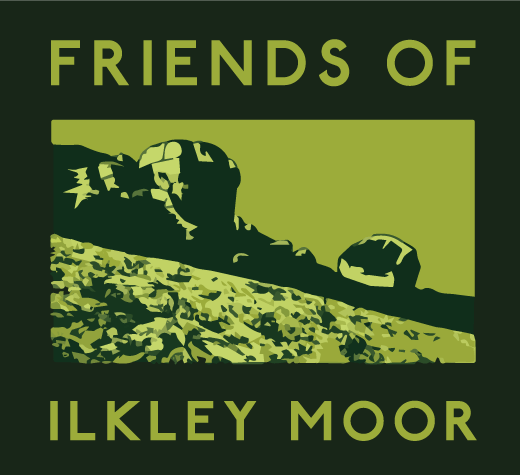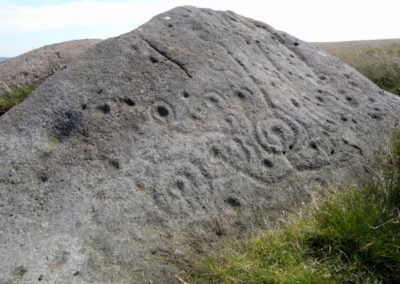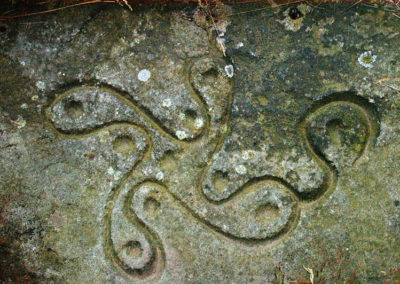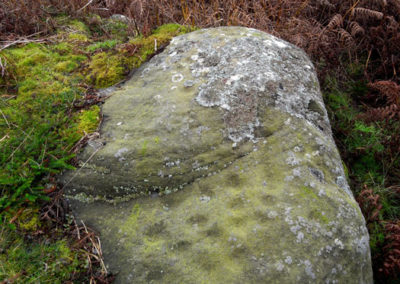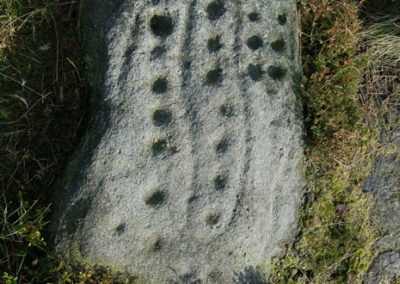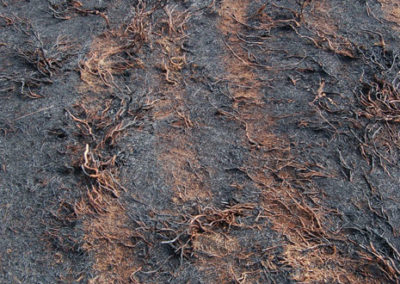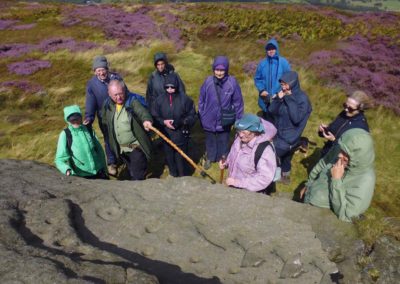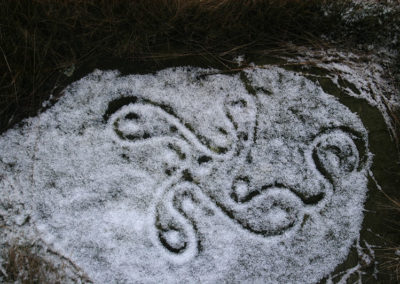
Archaeology
As for all other upland regions of the British Isles, Ilkley Moor owes much of its appearance to the effects of long term human intervention and exploitation. Following the retreat of the last Ice Age and the development of a mature woodland cover, humans have constantly re-evaluated the landscape as a resource. Firstly as a source of food and a place to live, then as a source of water, fuel and building materials, and more recently to satisfy the demands of recreational activities.
The combined effect of each generation interacting with its surroundings has brought about dramatic changes in soil fertility and vegetation cover. Such a dynamic and on-going process is not a simple one and has had different effects. The most extreme happened on the uplands where the fertility of the soils could not be maintained for any other agricultural use than rough grazing. As a result, unlike the valley zones where the land has been constantly reworked, there is still a great deal of evidence of early human activity to be found. Ilkley Moor is especially rich in such evidence, providing a much more detailed picture of human activity from the end of the last Ice Age to the present day.
The most important group of archaeological sites to be found on Ilkley Moor are carved rocks, also known as cup & ring marked rocks. Dating mostly from the Bronze Age (4500 to 2700 years ago), they are part of a much larger and internationally famous group to be found all across Rombalds Moor. Interest in them dates back to Victorian times but there is still very little known about them. While we may not know their exact purpose or meaning it is still remarkable to think that the same hands that made them were also working the landscape, helping to help create what we see today. Fortunately their importance has now been recognised and are protected as Scheduled Monuments.
Many other archaeological sites have been found all across Ilkley Moor with a particularly high concentration to be found on Green Crag Slack. At its most westerly extent lies Backstone Beck Enclosure, the remains of a settlement site that dates back possibly to Late Neolithic times (5000 to 4200 years ago). This was partially excavated in the 1980’s when a lot of flint artefacts were found, some of which had been worked into arrowheads and other tools. These are occasionally found on pathways by walkers who report their finds to the Manor House Museum , Castle Yard, Ilkley.
